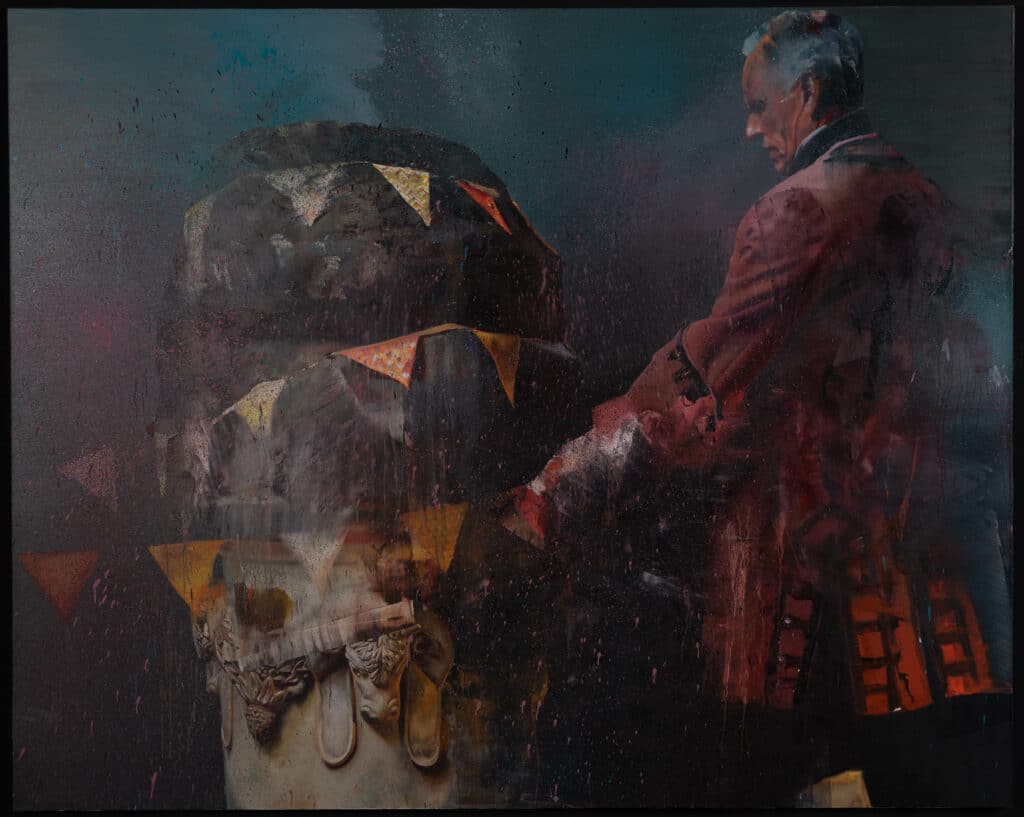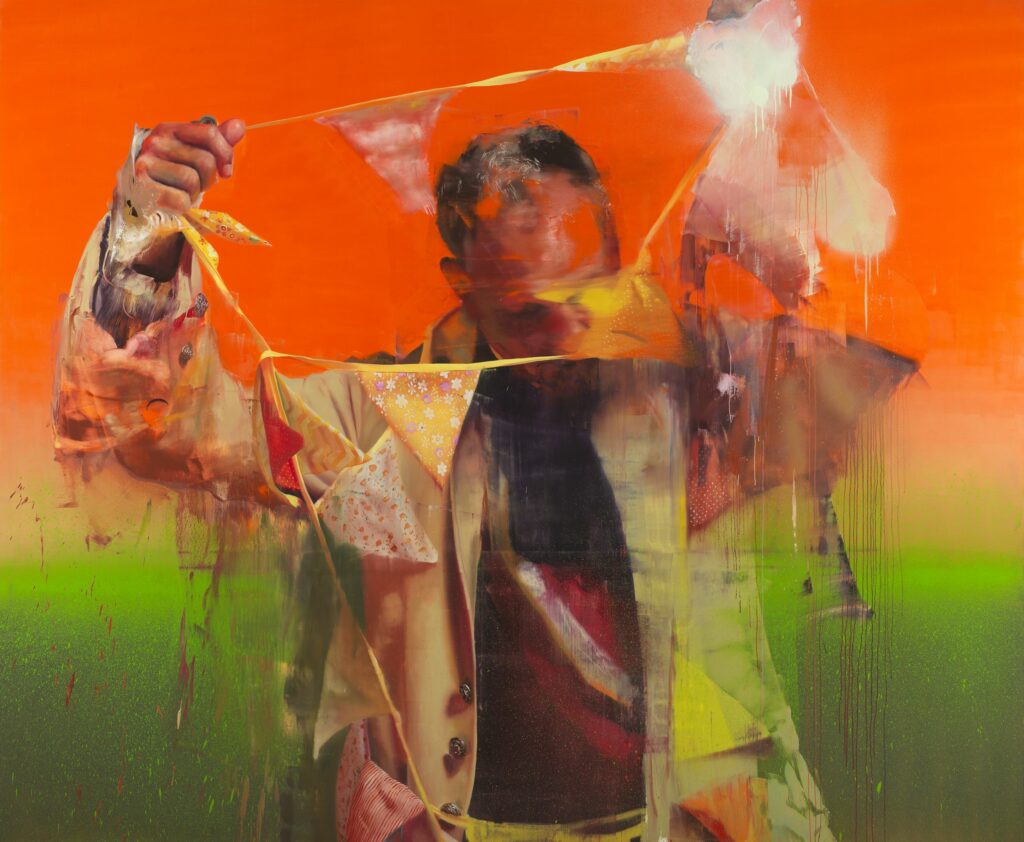Who is Conor Harrington?
Born in Ireland in 1980 and professionally trained at Limerick School of Art and Design, Conor Harrington has lived and worked in London for 20 years. Conor's work seamlessly blends elements of neoclassical historical painting with contemporary influences and technical methods influenced by Gerhard Richter and the graffiti artist Futura.
On Harrington's canvases, viewers encounter noblemen, ladies-in-waiting, soldiers and footmen in eighteenth-century costumes floating through indeterminate, dissolving spaces. The particular spatial structure of Harrington's paintings plays a crucial role in their interpretation, as the respective historical moment with the actors from the colonial era seems to sink into itself in the maelstrom of events.
How does Harrington work?
Harrington's works are a fascinating combination of street art and classical painting, partly reminiscent of the works of Renaissance artists. The subjects of his oil paintings are 18th century motifs; heroic figures in historical costumes, transposed to the present day. In his works, he deals with socio-political themes, it is about the power and fall of empires as well as the conflict in modern male identity.
The realistic images are overlaid with loose brushwork, dripping colours and abstract graffiti elements. Harrington is particularly interested in the dynamic between opposing elements. By integrating the old and the new, he creates a new world between classical and contemporary art in his paintings and murals. Conor Harrington is active all over the world, his outdoor works can be admired in countless places.
Harrington in the "25 Years" exhibition at MUCA Munich
At the MUCA, the two paintings "Rock Painting" and "Tangle Twister" as well as several study drawings by Harrington were exhibited in the anniversary show (06.10.2022 - 10.09.2023).
The opulent figures of eighteenth-century society thereby represent an equivalent of today's male ruling elite. The male figure draped in festive flags has metaphorically become entangled in self-congratulation and avoids the problems that the society under him is dealing with.

